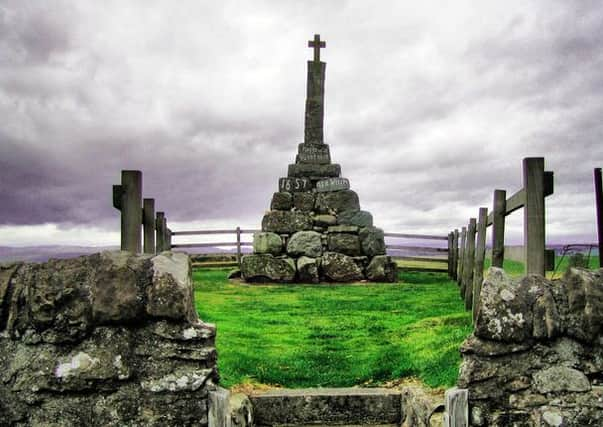The mysterious monument to a witch called Maggie Wall


The monument, a simple cairn with a cross on top, on the outskirts of Dunning, is sometimes adorned with offerings of pennies, feathers and other trinkets, with a wreath said to be laid for Maggie on occasion.
But a mystery has always surrounded the identity of Maggie - with experts of witchcraft in Scotland doubting if she ever existed at all.
Advertisement
Hide AdAdvertisement
Hide AdNo record of Maggie Wall is contained in The Survey of Scottish Witchcraft, an online resource which charts every recorded witch trial between 1563 and 1736.
A total of 3,837 women were accused of witchcraft in Scotland between 1563 and 1736, according to research carried out by Edinburgh University. Maggie Wall is not included in the 3,212 cases where the accused’s name in known.
What is known, however, is that six other women from nearby Auchterarder, in the parish of Dunning, were arrested an accused of witchcraft in July 1662.
Three of them, Issobell McKendley, Elspeth Reid and Jonet Toyes were all strangled and burned following the trial infront of a local panel of commissioners.
Advertisement
Hide AdAdvertisement
Hide AdTheir co-accused Issobell Goold, Agnes Hutsone and Anna Law, appear to have been set free.
No mention of Maggie Wall appears.
Dr Louise Yeoman, a witchcraft expert of Edinburgh University’s Scottish Studies department, who led work on the survey, earlier said there was no major spell of witch hunting around 1657, the date of Maggie Wall’s death, but that it could be the case that records of her case simply did not exist.
The survey also shows that local landowners the Rollos took part in the trials of the six Auchterarder women five years after the date given for the death of Maggie Wall.
It is on Rollo land that the monument sits.
One theorgy is that monument to Maggie may have been put up many years later by a new generation of the family in a fit of guilt about the persecutions.
Advertisement
Hide AdAdvertisement
Hide AdMaggie Walls Wood, referring to the wooded area that once surrounded the monument, was documented from 1829 and the monument doesn’t appear on an ordnance survey map until 1866.
One further explanation earlier put forward by Dr Yeoman is that the monument was built in keeping with the fashion of Sir Walter Scott, particularly Ivanhoe, published in 1823, which involves the rescue of a woman accused of witchcraft.
Other theories have suggested that Maggie Wall was killed in retribution for local unrest over the treatment of their local minister, Reverend Muschet, who was deemed unfit to preach by Church leaders.
Back in the mid 160Os, church officials were send to Dunning to investigate parish business but were attacked by a group of local women, who beat them with sticks and ripped the cloaks off their back.
Advertisement
Hide AdAdvertisement
Hide AdThe Synod was later to pronounce the whole female sex as “wicked” with a long held story that Maggie Wall was singled out for punishment.
On the wreath said to be occasionally laid on the monument is accompanied by a card, “In memory of Maggie Wall, Burnt by the Church in the Name of Christianity.”
But the identity of Maggie Wall remains far from complete with her true story remaining largely unknown.
It has also been argued that the story of another Perthshire witch, Kate McNiven, of Monzie, said to have been burned in 1615, is a complete fabrication.
No records of her witchcraft trial or death exist but several landmarks mark her life, such as Kate McNiven’s well near Crieff.
